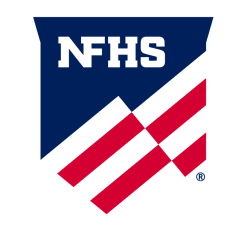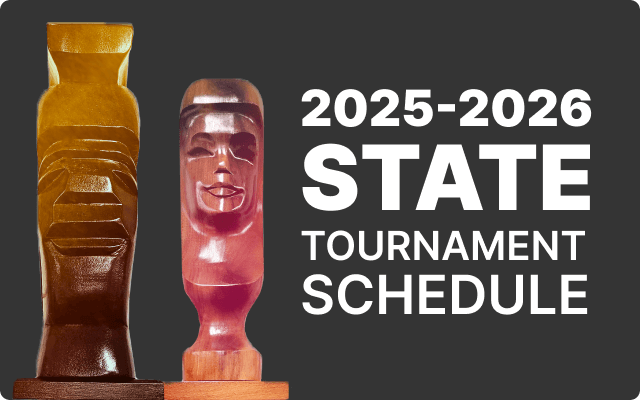INDIANAPOLIS, IN (April 22, 2019) — Effective with the 2019-20 high school season, a legal finish now requires the competitor to contact either the touchpad or the finish end coinciding with the individual stroke of the race. With this change, swimmers can legally complete a race by touching the finish end (end wall), regardless of whether the touchpad is activated.
This rules revision, which affects the finish of all strokes used in swimming, was one of two swimming and four diving changes recommended by the National Federation of State High School Associations (NFHS) Swimming and Diving Rules Committee at its March 24-26 meeting in Indianapolis. All recommendations were subsequently approved by the NFHS Board of Directors.
Rule 8-1-7 now will require swimmers to contact the finish end in the manner prescribed by the individual strokes. Descriptions of the backstroke, breaststroke, butterfly and freestyle finishes in Rule 8-2 state that a legal finish requires contact with either the touchpad or the finish end.
As a result of these changes, a swimmer will no longer be disqualified if the touchpad is not activated in races using automatic-timing systems.
“This change allows for situations in which pools do not have touchpads that stretch the entire width of the lane, or in cases where the touchpad is not activated when the competitor finishes the race,” said Sandy Searcy, NFHS director of sports and liaison to the Swimming and Diving Rules Committee. “In those cases, the competitor legally finishes the race by contacting the finish end.”
The other major swimming rules change involved the protocol for uniform violations, which involved reorganization of Rule 3-3 to specify the penalty protocol for uniform violations. While the penalties associated with an illegal uniform did not change, a new process for communicating any violations to the competitor was approved.
Effective with the 2019-20 season, when an official discovers a competitor wearing illegal attire specifically dealing with suit coverage as described in Rule 3-3-2, the official shall notify the coach of the competitor to make the attire legal before he or she is eligible to compete – if the uniform violation is observed prior to the start of the heat/dive. If the competitor cannot comply without delaying the start of the heat/dive, the competitor is disqualified from the event/dive and is not eligible for further competition until the attire is made legal.
Previously, the official notified the competitor directly when illegal attire was discovered; now the official will notify the coach of the competitor.
“The penalty associated with this rule was written to provide clear indication that the coach of the competitor should be notified when a violation of this nature has occurred,” Searcy said. “In the case of suit construction and cap violations, for practicality and concerns over delay of the meet, the officials may communicate with either the competitor or coach.”
Among the four diving rules changes was a change in degree of difficulty in the diving table in Rule 9-4. In a risk-minimization change, the degree of difficulty for back and reverse double somersaults was lowered to match back and reverse 1½ somersaults. This change is consistent with the degree of difficulty assessed to back and reverse dives versus back and reverse somersaults.
In Rule 9-5-6, descriptions of diving positions were adjusted to maintain consistency with national trends. Language has been updated to clarify requirements of the straight, pike, tuck and free positions.
In Rule 9-7-4, the following Note was approved: “In a championship meet, the diving referee may consult with a designated member of the judging panel concerning a possible unsatisfactory dive.”
“The addition of this Note is consistent with the diving referee’s capability of consulting with a designated member of the judging panel concerning a possible failed dive,” Searcy said. “Because of the severity of the penalty and the judging panels seated on opposite sides of the pool or spread out on one side covering 10-12 feet along the side of the pool, providing the option for the referee to consult with another member of the panel to determine if a dive is satisfactory is appropriate.”
Rule 9-1-3 regarding a fulcrum was updated to comply with industry standards. Searcy said the change aligns with current diving board manufacturers’ installation directions.
According to the 2017-18 NFHS High School Athletic Participation Survey, swimming and diving is the 10th-most popular sport for boys with 138,935 participants in 7,595 schools, and the eighth-most popular sport for girls with 175,594 participants in 7,961 schools.










